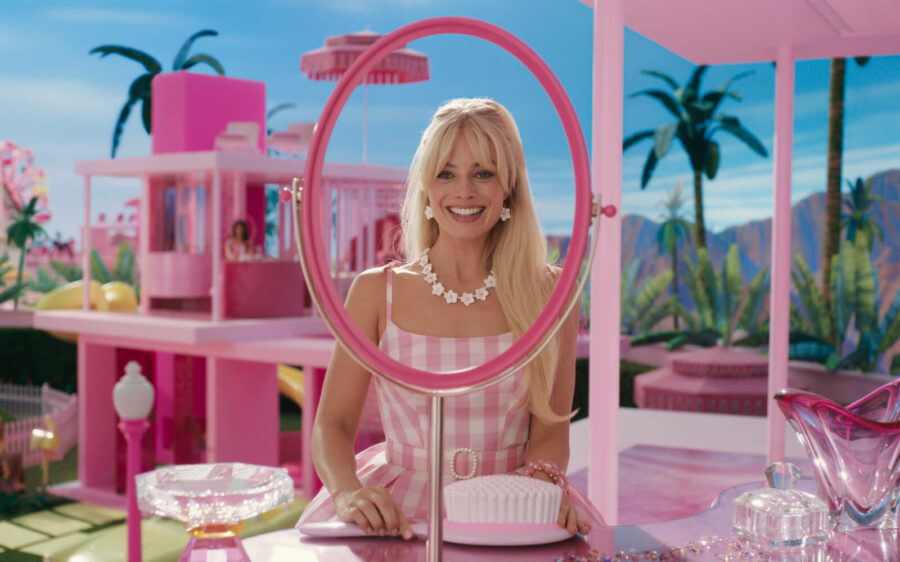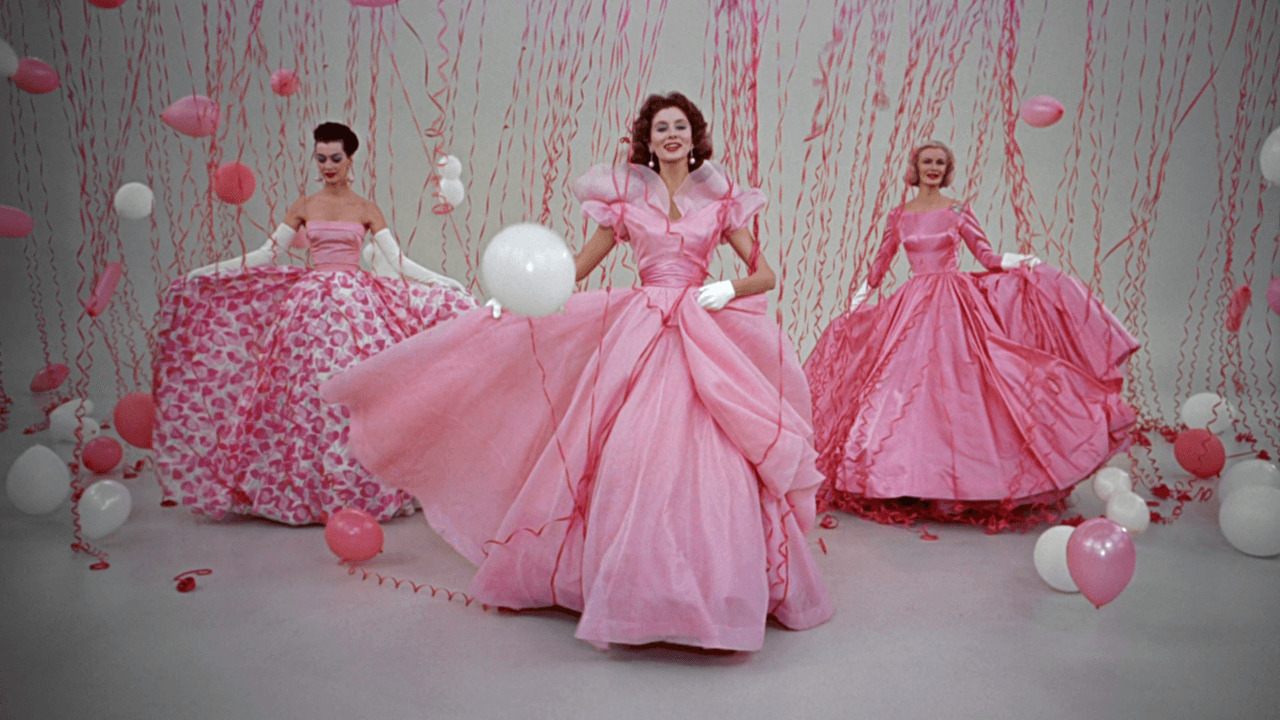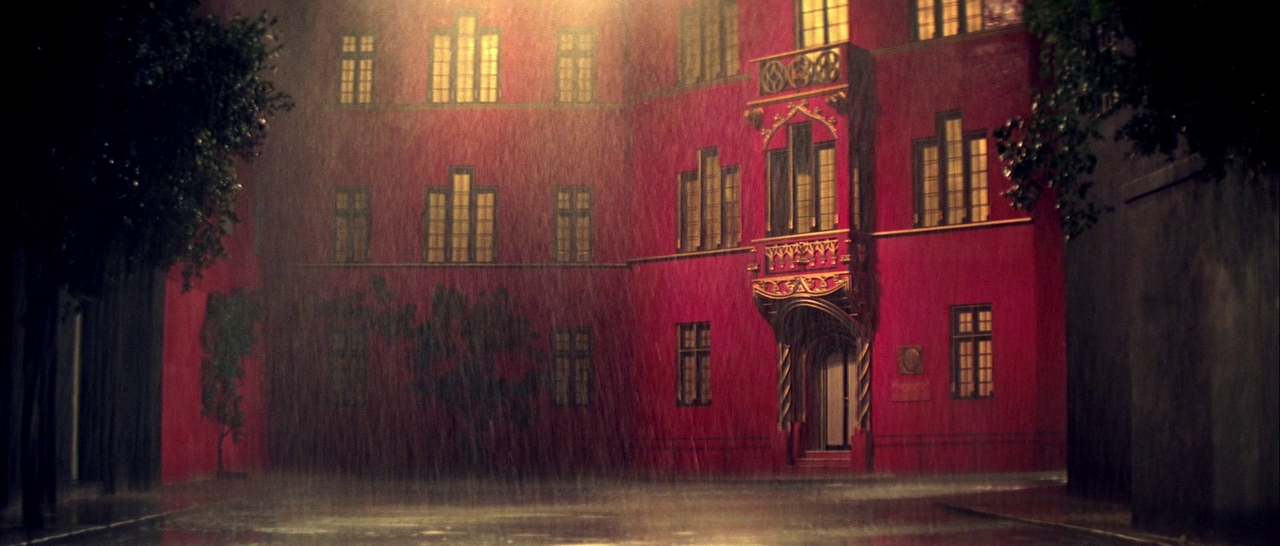By Khagan Aslanov
From hardcore heroes to electronic explorers, the scrappy fest once again proves itself as one of Canada’s boldest underground gatherings.

The Barbie movie is as extravagant as its titular toy. Rumour has it, production used so much pink paint it caused a worldwide shortage. In an Architectural Digest video of the Barbie Dream House, mumblecore-actress-turned-blockbuster-director Greta Gerwig (Lady Bird, Little Women) gushed about pink and the zillions of meetings the art team has held over their colour of choice. She divulges their design intentions, “because Barbie was invented in 1959, it felt like we could ground everything in that look — 1950s soundstage musicals, Gene Kelly or Vincent Minelli, those wonderfully fake but emotionally artificial spaces.”
Barbie knows its history. Accordingly, RANGE is chronicling the eras of pink in cinema, starting with those technicolor dreams, soundstage musicals. It’s a history of subversion and sex, tropes and triumphs, allusions and artistry. And it’s very, very colourful.
All colours contain connotations, but pink might be the most packed with significance. The intensity in which pink has been used as a gendering force to identify femininity, female sexuality, and girlishness makes the colour dense with meaning. That intensity, in turn, makes it an ideal transgressive tool. That’s precisely why pink shows up in punk scenes and protest movements, why it’s been reclaimed by feminists and embraced by queer communities. In the last century pink has symbolised femininity, eroticism, kitsch, sophistication, delicacy, and power, and cinema has captured all of that shifting history.
“Here it is, here’s our answer — pink!” bellows Maggie Prescott (Kay Thompson), the editor of Quality fashion magazine. She declares pink the new black, unravels a spool of fabric and launches into the opening number of Funny Face, one of the last classic musicals of the Golden Age of Hollywood.
“Think pink when you search for summer clothes!” She sings, leading a chorus of assistants and painters through a resplendent redecoration of the company offices. Staged tableaus and freeze-frame camera tricks intersperse the singing and dancing. Legendary photographer Richard Avedon served as “Special Visual Consultant” and his polished and pretty designs bring fashion advertisement art to life. The famous models of the Eileen Ford school, Dovima, Suzy Parker and Sunny Harnett, sparkle in pink diamonds.

Funny Face (1957)
Maggie needs a new It Girl to represent Quality, someone as smart as she is sophisticated. She enlists like-minded photographer Dick Avery (Fred Astaire) to track someone down, and who better than the bookish yet ravishing Jo Stockton (Audrey Hepburn). Dick convinces Jo to come model in Paris where she can cavort with intellectuals and artists of the “empathicalism” tradition. They stage iconic photoshoots in Givenchy gowns, they sing, they dance, they fight, and they (gasp) fall in love.
Funny Face is an on-the-nose example of Hollywood’s impact on garment sales and the intertwinement of on-screen costume designs and irl fashion trends. The pinks of the soundstage musicals are soft hues and bubble-gum pop, on glorious display in Ziegfield Follies (1945, remember this one for later), Singin’ in the Rain (1952, also directed by Stanley Donen), and Marilyn Monroe’s much-referenced “Diamonds are a Girl’s Best Friend” number in Gentlemen Prefer Blondes (1953). They’re unreal pinks, made possible through Technicolor, an expensive process requiring weighty cameras and piping hot, blinding lights that intensified the palettes of studio-filmed scenes. They’re theatrical, fantastical, and impossible. And, they’re the same shades appropriated by Barbie upon her emergence in 1959.
Like Midsommar’s relentless sun, pink works in horror because of its saccharine associations. It’s the last thing we’d expect, and it’s terrifying to have our safe havens invaded.
Dario Argento, Italian master of atmospheric horror, borrowed from Old Hollywood’s visual dictionary when making Suspiria. In fact, the vivid and violent tale of young American dancer Suzy (Jessica Harper), navigating a German ballet academy boobietrapped by a coven hunting for human sacrifices, was one of the last Technicolor films ever made. It’s possible Argento even pulled from a set piece in Funny Face, a dark and smokey Parisian tavern basked in vibrant green, blue, red, and fuschia.
Suspiria is a visual feast, whose kaleidoscopic pinks, purples, reds, blues, and greens serve just as strong a storytelling purpose as the plot. Argento gave cinematographer Luciano Tovoli — a newcomer to the horror genre — creative licence to craft a cornucopia of extraordinarily expressive images. “A horror film brings to the surface some of the ancestral fears that we hide deep inside us, and Suspiria would not have had the same cathartic function if I had utilised the fullness and consolatory sweetness of the full colour spectrum,” Tovoli told American Cinematographer in 2018.

Suspiria (1977)
“To immediately make Suspiria a total abstraction from what we call ‘everyday reality,’ I used the usually reassuring primary colours only in their purest essence, making them immediately, surprisingly violent and provocative. This brings the audience into the world of Suspiria,” says Tovoli. This total abstraction puts distance between the film and the viewer. “You say to yourself, ‘This will never happen to me because I have never seen such intense colours in my life. This makes you feel reassured and, at the same time, strangely attracted to proceed deeper and deeper into this colourful journey.”
The team employed tricky techniques to get the perfect look: Technicolor’s dye-transfer printing process, modified diffusers, gelled lighting, dangerously hot lamps, and mirrors. Production designer Giuseppe Bassan infused his geometric patterned walls and floors with equally striking hues. It was a labour of love that’s stood the test of time.
An underseen, low-budget, and rough-around-the-edges gore-fest — also shot in Italy, to pinch pennies — remains one of the few horror films to out-pink Suspiria. Stuart Gordon’s From Beyond, the second in a trilogy of the cult director’s H. P. Lovecraft adaptations, revolves around scientist Crawford Tillinghast and psychologist Katherine McMichaels (Re-Animator collaborators Jeffrey Combs and Barbara Crampton) as they conduct experiments with “the Resonator,” a machine that activates the pineal gland and opens up an overlapping dimension populated with murderous flying eels and insect monsters. Dr. Pretorious, Tillinghast’s mentor, enters this other world early in the film and transforms into a fleshy, ooey, gooey lech. Whenever the Resonator is turned on, which is, for obvious reasons, most of the film, it casts this nightmare in hot pink.
Like its contemporaries Videodrome (1983) and Hellraiser (1987), From Beyond combines extreme body horror, batshit practical effects, and BDSM. Katherine dons a dominatrix outfit for half the run-time and slime-worm Pretorious declares that “the most sensuous experience on earth is entering another person’s mind.” There’s some interesting gender stereotype reversals, with Katherine acting out of impulse, showcasing more sexual autonomy than her male counterpart and craving more and more mental power from the Resonator.
Special effects artists John Carl Buechler and John Naulin’s work rivals other grotesque creature design classics like The Blob (1958) and The Thing (1982). Its excessive pink lighting certainly inspired recent H. P. Lovecraft fright-flick Color Out of Space (2020) and that other oversaturated Nick Cage precedent, Mandy (2019). Pink opens the genre up to aesthetic alternatives and camp delights that make these movies memorable in the horror cannon.
The foredaddy of gay softcore arthouse cinema circulated anonymously for 28 years, accruing evermore mystique and spawning evermore imitations, until James Bidgood finally came forward as director. Pink Narcissus unspools the fantasies of a sex worker as he awaits clients in his Manhattan apartment. Without much dialogue or music or narrative, the camera luxuriates instead in scenographic colour, opulent trinkets, and the male figure. Made a few years after Stonewall and a few decades before queer sex was legalized in America, Bidgood crafted this visual poem to eke around obscenity laws.

Pink Narcissus (1971)
Growing up in the 1930s and 40s, Bidgood’s imagination marinated in the world of Old Hollywood. His greatest cinematic infatuation was Zigfeld Follies, a spectacle of song and dance adorned in luscious pinks. He experienced New York through Technicolor goggles. The city was “exactly as it appeared to be in MGM musicals. It was fast and it was more exciting than your second orgasm,” he told Another Man in 2019. When he debuted as drag queen “Terri How” at Club 82, sewing his own gowns, he imagined he was working the boards at the Ziegfeld theatre.
Bigwood infused his photography with the kitsch aesthetics of the 1940s and 50s, revolutionising gay male erotic imagery. He spent six years on Pink Narcissus, building ornate sets and filming on Super-8 in his Hell’s Kitchen apartment. Though he removed his name from the final product and lived in obscurity, his vision was so singular it influenced generations of creatives, from David LaChappelle, to Charli XCX, Olly Alexander, and Lil Nas X.
Jamie Babbit’s queer cult classic But I’m a Cheerleader (1999) connects the dots between pink and cis-heteronormativity, between aesthetic artifice and social construct. Teen lesbian Megan (Natasha Lyonne) winds up at True Directions conversion camp for the summer. The institution is ground zero for kitsch. Boys wear blue and girls wear pink. They perform cliches of gendered labour in lurid, candy-coloured sets.
Megan falls for fellow camper Graham (Clea DuVall) and develops confidence in her sexuality and herself. Her increasing courage tracks with the wardrobe’s increasing absurdity, as the heteronormative world she once took as gospel reveals itself as utter fabrication. This metaphor culminates in the graduation ceremony they attend wearing literal plastic.
Babbit modelled the film’s mise-en-scene off of Edward Scissorhands (1990) and — wait for it — the entire Barbie franchise. In her treatise on camp aesthetics, Susan Sontag writes “the essence of Camp is its love of the unnatural: of artifice and exaggeration.” Pink, especially that intense, illusory, and incredible pink made possible through Technicolor and thrust into the real world by Barbie dolls, modern synthetics, and industrial production methods, epitomises camp.
“Whoever said orange is the new pink was seriously disturbed!” Elle Woods (Reese Witherspoon) and Funny Face fashion magazine editor Maggie Prescott would’ve gotten along. Though on the surface it seems like little has changed from those regressive 1950s films, Elle’s obsession with pink defies decades of cultural change that said feminists couldn’t be frivolous. Elle flaunts her frilly and fun self through the halls of Harvard, that bastion of cultural conservatism, and flies in the face of staid stereotypes. She slays at law, uplifts her fellow girlies, and owns a pink sequin bikini. These are not contradictions.
During pre-production, costume designer Sophie de Rakoff and Reese Witherspoon visited sororities in Los Angeles. “We knew that [Elle] needed a signature colour, and we were like, ‘Do we really want it to be pink? It’s so on the nose. It’s so feminine. Could we do lavender? Could we do light blue? Is there another colour that we could do?’” de Rakoff recently told Entertainment Weekly. “When we met all the sorority girls, it had to be pink.”
Legally Blonde brought that sorority style to a broader audience, and the world ate it up. “It’s this movie that girls come back to again and again and again and again and again,” de Rakoff says. “What Reese did with that character, it’s still really relevant to girls today and I think that’s the most interesting thing about the movie, and they still respond to the clothes… Tacky can be great if it’s intentional.”
Elle was among good company in the cinematic universe, with Regina George (Mean Girls, 2004) and Cher Horowitz (Clueless, 1995). These characters gave no fucks, did what they wanted, and looked amazing doing it. They were forces of nature in head-to-toe glam.

Mean Girls (2004)
The Y2K era floated on the highs of third-wave feminism, the advent of the internet, and a few decades of relative political stability. It was a time full of hope. Fashion went nuts. Plastic was everywhere. Bimbos ascended. People could be anyone they wanted. Women could indulge in girly excesses and be radical at the same time. But cultural highs eventually lose air, and the aughts saw an onslaught of bimbo backlash.
Twenty years later and the world is reclaiming the trope. Tik Tok reignited the Bimbo trend. Barbie promises to bring that energy to the screen again, including the greatly anticipated himbofication of Ryan Gosling. Casting the crowned sex-icons of the 2010s as Barbie and Ken speaks volumes. Even though they’re missing genitals, they’re certified eye-candy.
In 2023, Barbie sits atop this history, with a view of every pink detail. The film has dipped its toes into every paint can of the last 80 years. They’re reigniting cinematic trends no movie has revisited in a long time: a soundtrack of original songs by a slew of pop stars, the entwinement of film and fashion, the set designs of soundstage musicals, and the glitz of the turn of the century. In a best case scenario, Barbie will make allusions to this canon updated for our current social climate.

Barbie (2023)
By Khagan Aslanov
From hardcore heroes to electronic explorers, the scrappy fest once again proves itself as one of Canada’s boldest underground gatherings.
By Prabhjot Bains
From Guillermo Del Toro to Charli XCX, TIFF marks its golden milestone with a lineup brimming with star power, daring auteurs, and unmissable premieres.
By Prabhjot Bains
Théodore Pellerin plays the year’s most chilling character in Lurker, a film that peels back the toxic economy of fame and obsession.